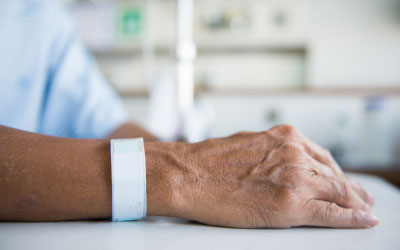CAR T-Cell Therapy for Leukemia
Chimeric antigen receptor (CAR) T-cell therapy modifies T-cells, improving immune cells' ability to find and destroy leukemia cells. Also known as T-lymphocytes, T-cells are a type of white blood cell that helps the immune system fight cancer and viruses. CAR T-cell therapy is a highly advanced leukemia treatment only available at specialized medical centers nationwide.
How does CAR T-cell therapy treat leukemia?
CAR T-cell therapy is a type of immunotherapy that improves the ability of T-cells to attach to leukemia cells and destroy them. T-cells have proteins called receptors that bind to antigens (another type of protein) on cells that pose a threat. Once attached, the T-cells activate, multiply, and send signals to the immune system to destroy the diseased cells.
Different types of leukemia and other blood cancers have unique antigens. Sometimes, T-cells don’t have the right receptors for a cancer cell antigen. As a result, the T-cells can’t bind to them, and the leukemia cells grow out of control. CAR T-cell therapy changes the T-cells so they can attach to and destroy cancer cells. To determine whether CAR T-cell therapy can help, patients undergo a genetic test (a type of blood test) to identify the cancer’s antigen type.
What steps take place during CAR T-cell therapy?
CAR T-cell therapy takes place over several weeks. It involves:
- Removing T-cells from the blood of the person who has leukemia during a two- to three-hour procedure known as leukapheresis. A machine returns the filtered blood (minus the T-cells) back into the person’s bloodstream.
- Sending the T-cells to a laboratory where they activate and multiply.
- Modifying the T-cells with an inactive virus that triggers genetic changes. These changes cause CAR proteins to form on the cells’ surfaces. The CAR proteins enable T-cells to recognize a specific antigen on targeted leukemia cells.
- Growing millions of these modified T-cells (now called CAR T-cells) in the lab over three to six weeks.
- Freezing and shipping the CAR T-cells to the medical center.
- Administering a low dose of chemotherapy for a few days to the person who has leukemia to reduce the number of immune cells in the body. This step lowers the chances of the immune system reacting to the newly infused CAR T-cells.
- Infusing the thawed CAR T-cells into a person’s bloodstream where they bind to leukemia cells and grow in number, helping to destroy even more cancer cells.
Who needs CAR T-cell therapy for leukemia?
CAR T-cell therapy may help when leukemia doesn’t respond to leukemia treatments (refractory cancer) or the cancer comes back (cancer recurrence or relapse).
CAR T-cell therapy can treat:
What other types of leukemia does CAR T-cell therapy treat?
CAR T-cell therapy is an approved childhood leukemia treatment for people who have B-ALL. It may also be available through clinical trials for other types of adult and childhood leukemias.
What are the side effects of CAR T-cell therapy for leukemia?
CAR T-cell therapy has the potential to cause serious, life-threatening side effects. People who receive this therapy require close monitoring for several weeks after finishing the treatment. Severe side effects may require treatment in a hospital. There are steps you can take to manage less severe treatment side effects.
Side effects may include:
- Cytokine release syndrome (CRS)
- Immune effector cell-associated neurotoxicity syndrome (ICANS)
Cytokine release syndrome (CRS)
Cytokine release syndrome (CRS) occurs as the multiplying CAR T-cells release immune substances called cytokines into the bloodstream. These chemicals can overstimulate the immune system, causing potentially life-threatening side effects.
CRS may occur up to two weeks after an infusion. Signs of CRS include:
- Breathing problems
- Chills and fever
- Dizziness
- Extreme fatigue
- Fast heartbeat and low blood pressure
- Headaches
- Muscle and joint pain
- Severe nausea, vomiting, and diarrhea
- Skin rash
Immune effector cell-associated neurotoxicity syndrome (ICANS)
This syndrome typically occurs one to four weeks after an infusion and after a person has cytokine release syndrome. The cytokines affect the brain and nervous system, causing problems like:
- Agitation
- Balance and coordination problems
- Confusion and memory loss
- Headaches
- Loss of consciousness
- Seizures or tremors
- Speech difficulties
Treatment resources for you and your loved ones
Support can make a significant difference when you need leukemia treatments. Check out our directory of resources, including treatment-specific webinars, for patients, families, and caregivers.



